Q
Is Perodua Ativa FWD or RWD?
The Perodua Ativa is a front-wheel-drive (FWD) compact SUV with a front-engine, front-wheel-drive layout. This design is quite common in the Malaysian market because it offers better fuel economy and higher utilization of interior space, making it ideal for city driving and daily commuting. As Perodua's flagship SUV model, the Ativa is built on the DNGA platform and is equipped with a 1.0-liter turbocharged engine, which delivers smooth power and is fuel-efficient. Meanwhile, it comes with a wealth of safety technologies, such as the Advanced Safety Assist (ASA) 3.0 system, fully meeting the needs of Malaysian family users. The advantages of front-wheel drive lie in its simple structure, lower maintenance costs, and easier control when driving on slippery roads. This is a practical design considering Malaysia's rainy climate. If you're considering buying an Ativa, you can rest assured that its drive system can fully meet local road conditions and driving habits. Moreover, Perodua's after-sales service network covers the whole country, making repairs and maintenance very convenient.
Special Disclaimer: This content is published by users and does not represent the views or position of PCauto.
Related Q&A
Q
How many cc is Ativa?
The Perodua Ativa is a highly popular compact SUV in the Malaysian market. It is powered by a 1.0-liter three-cylinder turbocharged engine with an actual displacement of 998cc, falling into the category of small-displacement turbocharged engines. This design ensures power output while also taking fuel economy into account, making it very suitable for city driving. The Ativa has a maximum power of 98 horsepower and a peak torque of 140 Nm. Paired with a D-CVT transmission, it offers smooth power delivery and a responsive performance, which is ideal for daily commuting and family use.
It's worth mentioning that small-displacement turbocharged engines have become increasingly popular in the Malaysian market in recent years. They can provide decent power performance while reducing fuel consumption and emissions, meeting the dual demands of modern consumers for environmental protection and economy. The Ativa is also equipped with an advanced Safety Assist system, including functions such as pre-collision warning and lane-keeping assist, which further enhances driving safety.
For Malaysian consumers with a limited budget who want to enjoy the practicality and technological features of an SUV, the Ativa is a worthy option. Its cost-effectiveness and low maintenance costs are also what make it attractive.
Q
How many cylinders are in Perodua Ativa?
The Perodua Ativa is equipped with a 1.0-liter three-cylinder turbocharged engine, so it has a total of three cylinders. This engine adopts the advanced Dual VVT-i technology, which can provide good power output while taking fuel economy into account. It's very suitable for the frequent start-stop traffic conditions in Malaysian cities. The design of the three-cylinder engine is becoming more and more common in small SUVs because it can achieve high efficiency in a compact size and reduce the overall vehicle weight at the same time, which is very practical for daily commuting. The maximum power of Ativa's engine is 98 horsepower, and the peak torque is 140 N·m. It is mated with a D-CVT gearbox, and its overall performance is smooth and reliable. As a popular SUV model under Perodua, Ativa is loved by many Malaysian consumers, especially young families and urban commuters, thanks to its small and flexible body and economical fuel consumption. Although the three-cylinder engine requires higher technical requirements in noise and vibration control, the modern automotive industry has significantly improved these problems through technologies such as balance shafts to ensure driving comfort.
Q
What is the starting price of Ativa?
As one of the most popular entry - level SUVs in the Malaysian market, the starting price of the Perodua Ativa is around RM62,500 (excluding insurance). This is the base price for the 1.0L Turbo AV version. For the higher - spec 1.0L Turbo H version, the price starts from around RM72,000. The actual price may vary slightly due to dealer promotions or optional packages.
The Ativa is powered by a 1.0 - liter three - cylinder turbocharged engine, paired with a D - CVT transmission. It focuses on fuel economy, with an official fuel consumption data of 18.9 km/L. It also comes with the ASA 3.0 advanced safety assist system, including functions like pre - collision warning and lane - keeping assist. Its cost - effectiveness is quite competitive among B - segment SUVs.
It's worth noting that the Ativa is a sister model of the Japanese Daihatsu Rocky and Toyota Raize, sharing the DNGA modular platform. However, it has adjusted the suspension settings according to Malaysian road conditions and uses local parts to control costs.
When buying a car, it is recommended that consumers compare the road tax rates in different states and pay attention to the after - sales promotion packages regularly launched by Perodua, such as free maintenance times or low - interest loans. These can further reduce the cost of car ownership.
Q
Does Ativa have auto brake?
The Perodua Ativa is indeed equipped with an Autonomous Emergency Braking (AEB) system, which is part of its advanced safety assistance features. This system uses a front - mounted camera and radar to detect vehicles or pedestrians ahead. When a potential collision is detected, it automatically triggers the brakes to reduce the risk of accidents, making it particularly suitable for the complex urban traffic environment in Malaysia.
In addition to AEB, the Ativa also comes with active safety features such as Lane Keeping Assist and Adaptive Cruise Control. Overall, it has achieved a leading level of protection in its class.
It's worth noting that the Autonomous Emergency Braking system may have different technical names among different brands. For example, Toyota calls it the Pre - Collision System (PCS), while Honda refers to it as the Collision Mitigation Braking System (CMBS). However, their core functions are similar.
As a car owner, it is recommended to regularly check the cleanliness of the radar and camera to ensure the system's sensitivity. At the same time, it's important to understand that such systems are only auxiliary functions, and maintaining concentration while driving remains the primary guarantee for safety.
According to data from the Malaysian Road Safety Research Institute, vehicles equipped with AEB can reduce rear - end collisions by approximately 40%. This kind of technology is gradually becoming the mainstream configuration for new local cars.
Q
Can Ativa use CarPlay?
The Ativa is compatible with CarPlay. Some users have reported that the 2021 Perodua Ativa in Malaysia can use CarPlay. However, the data cable provided as a bonus doesn't work, causing constant disconnection. You need to use the Type-C 3.0 fast-charging data cable that comes with the original phone to avoid disconnection. Also, the overseas car infotainment system must have Easy Connect to use CarPlay.
CarPlay is an in-vehicle system launched by Apple Inc. in the United States. It seamlessly integrates users' iOS devices and iOS experience with the dashboard system. Once successfully connected, you can use the voice assistant Siri on your phone to control the in-car multimedia system. You can also operate through the touch screen on the car's dashboard or the physical buttons on the steering wheel. This makes driving operations more convenient, reduces the time drivers spend on operations while driving, and improves safety.
Q
Is Ativa 4 wheel drive?
The Perodua Ativa is a popular small SUV in the Malaysian market. However, it's not a four-wheel drive (4WD) vehicle. Instead, it uses a front-wheel drive (FWD) system. This design emphasizes fuel economy for city driving and daily practicality. The Ativa is equipped with a 1.0-liter turbocharged engine paired with a D-CVT transmission. Its power performance is suitable for city commuting. Meanwhile, its compact body size and high ground clearance also improve its passability on common road conditions in Malaysia.
For users who need four-wheel drive, they can consider other models such as the Proton X70 (some versions offer AWD) or the Toyota Rush (with an optional 4WD version). These models are more suitable for off-road or slippery roads. Four-wheel drive systems are generally divided into all-wheel drive (AWD) and part-time four-wheel drive (4WD). The former is suitable for all-weather road conditions, while the latter focuses more on off-road performance. When making a choice, you need to weigh fuel consumption, cost, and driving scenarios according to your actual needs.
In Malaysia's rainy climate, four-wheel drive models can provide better grip. However, front-wheel drive vehicles with an electronic stability system (like the ASA 3.0 standard on the Ativa) can also meet most daily needs.
Q
Is Ativa a safe car?
As a popular small SUV in the Malaysian market, the Perodua Ativa's safety performance meets the mainstream level of models in its price range. It comes standard with basic features such as dual airbags, ABS + EBD, Electronic Stability Control (ESC), and Hill Start Assist. The high - end version also adds side airbags and advanced active safety systems like Autonomous Emergency Braking (AEB) and Lane Departure Warning. Overall, its safety equipment is better than entry - level models in the same class but not as good as more premium products.
According to the ASEAN NCAP test, the Ativa received a five - star rating, with an 83% score in the adult occupant protection category. This shows that its body structure can effectively protect passengers in a collision. However, it should be noted that these tests are conducted under standard conditions, and the results in real - world road accidents may vary depending on the collision angle and speed.
For Malaysian consumers, the safety performance of the Ativa meets the needs of daily urban commuting. However, if you frequently drive long - distance on highways, it is recommended to choose a version with a more comprehensive active safety system.
It's important to note that the safety performance of any vehicle highly depends on proper use, including wearing seat belts, obeying speed limits, and regular maintenance. Good driving habits, along with maintaining an appropriate following distance and having a defensive driving mindset, can often prevent accidents more effectively than vehicle configurations.
Q
Does Ativa save fuel?
As a B-Segment SUV equipped with a 1.0-liter turbocharged engine, the Perodua Ativa really performs well in terms of fuel economy. Official data shows that its fuel consumption is about 18.9 km/l. This figure is quite fuel-efficient among vehicles in the same class, making it especially suitable for the stop-and-go traffic conditions in Malaysian cities. This is mainly due to its D-CVT transmission and engine auto start-stop technology, which can effectively reduce unnecessary fuel consumption.
If you want to further improve fuel efficiency, it is recommended to keep up with regular maintenance, use the recommended viscosity of engine oil, and avoid bad driving habits such as rapid acceleration and hard braking. Actually, apart from the vehicle's own design, driving style and road conditions also play a significant role in fuel consumption. Small SUVs like the Ativa are more flexible and fuel-efficient for urban commuting than large SUVs. However, if you often drive long distances on highways, the fuel consumption advantage may not be as obvious.
In addition, the proper use of air conditioning in Malaysia's hot weather can also affect fuel consumption. It is recommended to set the temperature between 23 - 25 degrees Celsius to achieve energy-saving results.
Q
What kind of car is Perodua Ativa?
The Perodua Ativa is a compact SUV launched by the Malaysian local brand Perodua. It was officially launched in 2021. As the brand's first model built on the DNGA (Daihatsu New Global Architecture) platform, it is equipped with a 1.0 - liter turbocharged three - cylinder engine with a maximum output power of 98 horsepower and a peak torque of 140 N·m. It also comes with a D - CVT gearbox, providing a smooth driving experience.
The Ativa is well - received by Malaysian consumers for its stylish exterior design, rich configurations, and affordable price. Its features include LED headlights, an advanced driving assistance system (such as ASA 3.0), and a spacious interior, making it suitable for urban commuting and family use. As Perodua's flagship SUV, the Ativa also has high fuel economy, meeting the Malaysian consumers' requirements for practicality and affordability.
In addition, the launch of the Ativa further enriches the options in the Malaysian local automotive market, demonstrating Perodua's efforts in technological innovation and model diversification and offering consumers more cost - effective choices.
Q
Is Ativa cvt?
Yes, the Perodua Ativa is indeed equipped with a CVT transmission. This transmission is supplied by Daihatsu and features a more lightweight and efficient design. It can provide a smooth acceleration experience and optimize fuel economy, making it highly suitable for the stop - and - go traffic conditions commonly found in Malaysian urban driving.
Unlike traditional automatic transmissions, the CVT uses continuously variable transmission technology to achieve a more linear power output, reducing the sense of jerk during gear shifts. At the same time, it keeps the engine running in the efficient speed range, which is also one of the reasons why the Ativa performs well in terms of fuel consumption.
For Malaysian consumers, the low maintenance cost and reliability of the CVT are also advantages worth considering. However, it should be noted that the CVT may respond a bit slowly during aggressive driving, and it is more suitable for a driving style that prioritizes comfort and economy.
In addition, the Ativa is also equipped with an Eco mode, which further enhances fuel efficiency. These features make it a popular choice for small SUVs in the Malaysian market.
Latest Q&A
Q
Is Challenger 2 seater or 4 seater?
As a classic American muscle car, the seating configuration of the Challenger depends on the specific model version. Take the Dodge Challenger, which is quite common in the Malaysian market, as an example. The standard version of this car features a 2+2 four-seat layout (two full-sized seats in the front row plus two smaller seats in the rear row). However, high-performance versions like the SRT Hellcat may remove the rear seats and adopt a pure two-seat design to reduce the vehicle's weight.
Malaysian consumers should note that there may be differences in the configurations of imported models with different production years and displacements. It is recommended to confirm the specific specifications through local authorized dealers.
It's worth noting that this type of American muscle car is a niche model in Malaysia. Its wide body size (with a length of over 5 meters) requires some adaptation when driving on local narrow roads. Nevertheless, the powerful sound of the V8 engine and its classic styling still attract many car enthusiasts.
If practicality is a major consideration, SUV models like the Durango from the same brand are more suitable for family use. On the other hand, the Challenger is more suitable for enthusiasts who pursue the American-style sentiment and the experience of straight-line acceleration.
Q
What are the disadvantages of a Dodge Challenger?
The Dodge Challenger, as a classic American muscle car, has unique charm in terms of power performance and design style. However, it also has some limitations in the Malaysian market. First of all, its large-displacement engines (such as the 5.7L or 6.4L HEMI) result in high fuel consumption. In an environment where fuel prices in Malaysia fluctuate greatly, this may increase the cost of use. At the same time, the emission standards may also face stricter compliance requirements. Secondly, with a length of over 5 meters and a relatively wide wheelbase, it has poor flexibility on narrow roads or in old-style parking lots in cities like Kuala Lumpur. It is not as convenient as compact cars for daily commuting. In terms of interior space, although the front row is spacious, the rear-seat legroom is relatively cramped, making it more suitable for two passengers. In addition, as an imported vehicle, its parts supply cycle is long and the maintenance cost is higher than that of locally assembled models. Also, special attention should be paid to the performance of the factory-configured summer tires on wet roads in Malaysia's rainy climate. It's worth noting that the suspension tuning of American muscle cars is on the stiffer side, which may affect comfort in some areas of Malaysia with poor road conditions. However, for car enthusiasts who pursue personalization and the sound of a V8 engine, these features may also be regarded as part of its unique charm. It is recommended that potential buyers weigh their needs according to their actual usage scenarios.
Q
Is a Challenger an everyday car?
As a classic American muscle car, the Dodge Challenger was originally designed with a greater emphasis on performance and driving pleasure rather than daily commuting. However, it can still be used as a daily vehicle in specific usage scenarios in Malaysia. This car is equipped with large-displacement HEMI V8 engines (such as the R/T or Hellcat versions), which offer powerful performance but come with high fuel consumption. It may not be very cost-effective in congested areas like Kuala Lumpur. Nevertheless, the 3.6L V6 version (such as the SXT) has relatively better fuel efficiency, making it more suitable for daily driving.
The chassis of the Challenger is tuned to be on the stiffer side, which is well-suited to the good highway conditions in Malaysia. But when it comes to the old urban roads, the ride comfort will be reduced. In terms of interior space, the four-seat design can meet the needs of small families, and the trunk has a volume of up to 462 liters, making it more practical than many sports cars.
It's worth noting that in Malaysia's hot climate, special attention should be paid to mechanical heat dissipation. Moreover, the right-hand-drive version can only be obtained through parallel imports, and the maintenance cost will be higher than that of ordinary Japanese cars. If you have a sufficient budget and prefer the American style, the unique styling and exhaust sound of the Challenger can definitely turn a lot of heads. However, if you're looking for practicality at the same price, you can also consider Japanese performance sedans or European hot hatches. When making a choice, it is recommended to weigh the actual commuting distance and road conditions. After all, the charm of a muscle car lies in unleashing its wildness rather than compromising for daily use.
Q
Are challengers fuel efficient?
As a classic American muscle car, fuel economy isn't the main selling point of the Dodge Challenger. Especially in the V6 or V8 engine versions commonly seen in the Malaysian market, the urban fuel consumption is about 12-15 liters per 100 kilometers, and it can drop to 9-11 liters per 100 kilometers during highway cruising. This is slightly higher compared to Japanese or European performance cars in the same class, but it aligns with its emphasis on large-displacement power output and retro design concept.
If you're considering fuel efficiency, you can focus on the SXT version equipped with a 3.6L Pentastar V6 engine, or choose options like the rear-axle differential and active exhaust to improve highway cruising efficiency. Malaysian consumers should note that this type of American car is more suitable for long-distance driving or for collectors. If you commute frequently and care about fuel consumption, you can also compare local popular hybrid models such as the Toyota Camry Hybrid or the Honda City RS, which can optimize fuel performance while maintaining power.
When making an actual choice, it's advisable to consider your own driving habits and fuel budget, and take a test drive to experience the unique driving feel and the charming engine roar of an American muscle car.
Q
Do challengers last long?
The Dodge Challenger, a classic American muscle car, performs quite reliably in terms of durability. Especially its V8 engine versions like the Hellcat or Demon, with their robust mechanical structures and mature powertrain technologies, can run for a long time under proper maintenance. The climate in Malaysia is hot and humid. It's recommended that car owners pay special attention to the regular inspection of the cooling system and rubber parts. Meanwhile, choose engine oil and coolant suitable for the tropical climate to extend the vehicle's lifespan. American cars generally focus on low-speed and high-torque tuning, which is suitable for the stop-and-go traffic conditions in Malaysia, but they consume relatively more fuel. If you're considering long-term ownership, it's advisable to check whether the local after-sales network is well-established and if the supply of spare parts is sufficient. In fact, the durability of any vehicle highly depends on maintenance habits. Regularly replacing key components such as the timing belt and transmission fluid is crucial. For users who love muscle cars but are worried about maintenance costs, they can also consider Japanese performance cars like the Toyota Supra or the Nissan Z series, as their adaptability in tropical regions has been proven over a longer period.
View MoreRelated News

Perodua Ativa review: A B-Segment SUV with outstanding value for money
AshleyJul 21, 2025
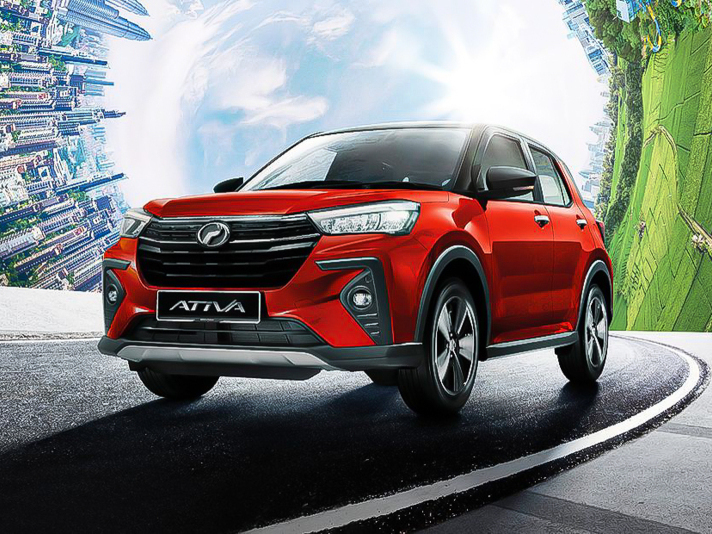
Perodua Ativa interior design revealed: One of Malaysia's most popular urban SUVs
JamesJul 14, 2025
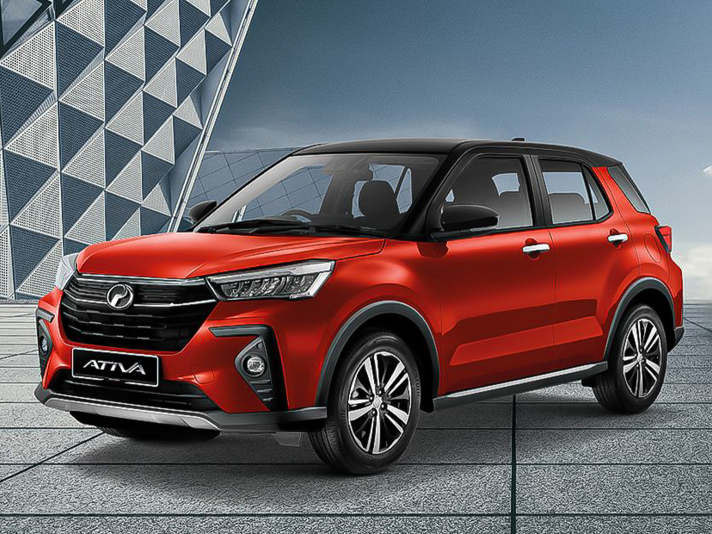
Perodua Ativa: Why Malaysia's Top Compact SUV?
MichaelJun 12, 2025
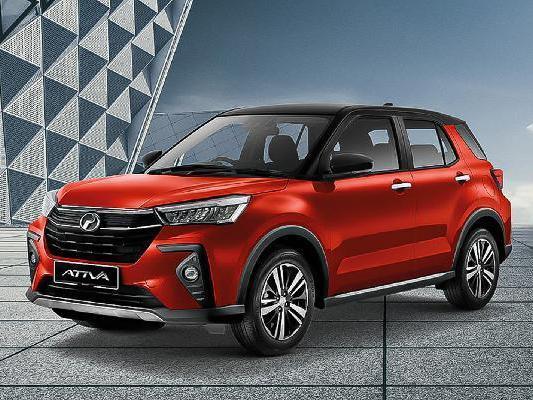
The Comprehensive Introduction of the Perodua Ativa: A Must-Read Before Buying
RobertMar 25, 2025
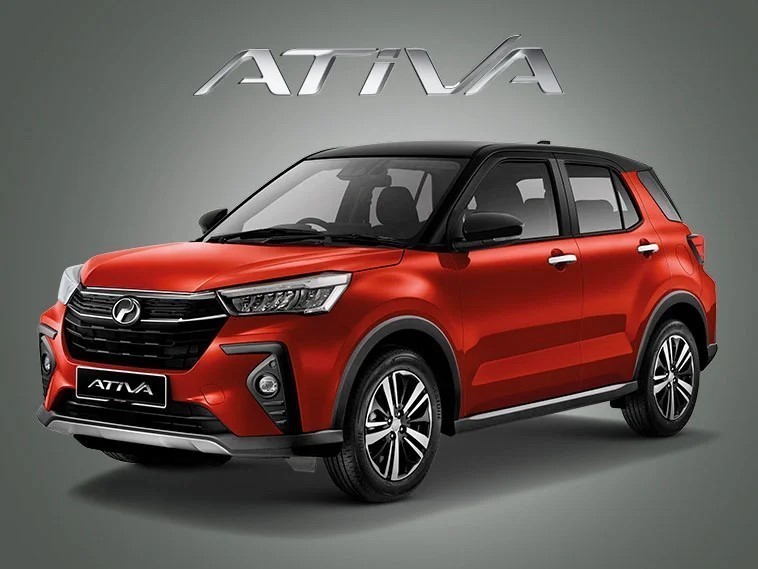
The Perodua Ativa will be revamped this year, codenamed D25D, with the addition of the Carplay feature
JohnFeb 25, 2025
View More












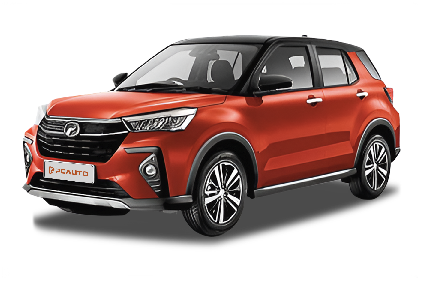





Pros
Cons